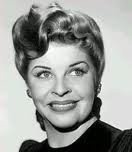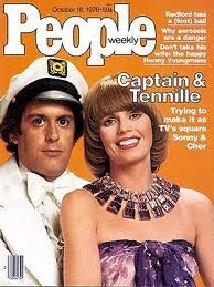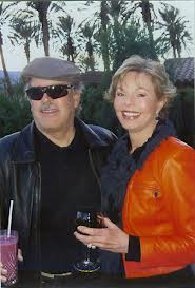Hoover Dam is a concrete arch-gravity dam in the Black Canyon of the Colorado River, on the border between the U.S. states of Nevada and Arizona. It was constructed between 1931 and 1936 during the Great Depression and was dedicated on September 30, 1935, by President Franklin D. Roosevelt. Its construction was the result of a massive effort involving thousands of workers, and cost over one hundred lives. It was referred to as Hoover Dam after President Herbert Hoover in bills passed by Congress during its construction; it was named Boulder Dam by the Roosevelt administration. The Hoover Dam name was restored by Congress in 1947.
Since about 1900, the Black Canyon and nearby Boulder Canyon had been investigated for their potential to support a dam that would control floods, provide irrigation water and produce hydroelectric power. In 1928, Congress authorized the project. The winning bid to build the dam was submitted by a consortium named Six Companies, Inc., which began construction of the dam in early 1931. Such a large concrete structure had never been built before, and some of the techniques were unproven. The torrid summer weather and lack of facilities near the site also presented difficulties. Nevertheless, Six Companies turned the dam over to the federal government on March 1, 1936, more than two years ahead of schedule.
Hoover Dam impounds Lake Mead, the largest reservoir in the United States by volume when full. The dam is located near Boulder City, Nevada, a municipality originally constructed for workers on the construction project, about 30 miles southeast of Las Vegas, Nevada. The dam's generators provide power for public and private utilities in Nevada, Arizona, and California. Hoover Dam is a major tourist attraction, with 7 million tourists a year. The heavily traveled U.S. Route 93 (US 93) ran along the dam's crest until October 2010, when the Hoover Dam Bypass opened.
As the United States developed the Southwest, the Colorado River was seen as a potential source of irrigation water. An initial attempt at diverting the river for irrigation purposes occurred in the late 1890s, when land speculator William Beatty built the Alamo Canal just north of the Mexican border; the canal dipped into Mexico before running to a desolate area Beatty named the Imperial Valley. Though water from the Imperial Canal allowed for the widespread settlement of the valley, the canal proved expensive to operate. After a catastrophic breach that caused the Colorado River to fill the Salton Sea, the Southern Pacific Railroad spent $3 million in 1906–07 to stabilize the waterway, an amount it hoped in vain would be reimbursed by the federal government. Even after the waterway was stabilized, it proved unsatisfactory because of constant disputes with landowners on the Mexican side of the border.
As the technology of electric power transmission improved, the Lower Colorado was considered for its hydroelectric-power potential. In 1902, the Edison Electric Company of Los Angeles surveyed the river in the hope of building a 40-foot rock dam which could generate 10,000 horsepower. However, at the time, the limit of transmission of electric power was 80 miles, and there were few customers (mostly mines) within that limit. Edison allowed land options it held on the river to lapse—including an option for what became the site of Hoover Dam.
In the following years, the Bureau of Reclamation (BOR), known as the Reclamation Service at the time, also considered the Lower Colorado as the site for a dam. Service chief Arthur Powell Davis proposed using dynamite to collapse the walls of Boulder Canyon, 20 miles (32 km) north of the eventual dam site, into the river.[13] The river would carry off the smaller pieces of debris, and a dam would be built incorporating the remaining rubble. In 1922, after considering it for several years, the Reclamation Service finally rejected the proposal, citing doubts about the unproven technique and questions as to whether it would, in fact, save money.
The city of Las Vegas had lobbied hard to be the headquarters for the dam construction, closing its many speakeasies when the decision maker, Secretary of the Interior Ray Wilbur, came to town. Instead, Wilbur announced in early 1930 that a model city was to be built in the desert near the dam site. This town became known as Boulder City, Nevada. Construction of a rail line joining Las Vegas and the dam site began in September 1930.
A total of 3,250,000 cubic yards of concrete was used in the dam before concrete pouring ceased on May 29, 1935. In addition, 1,110,000 cu yd were used in the power plant and other works. More than 582 miles of cooling pipes were placed within the concrete. Overall, there is enough concrete in the dam to pave a two-lane highway from San Francisco to New York. Concrete cores were removed from the dam for testing in 1995; they showed that "Hoover Dam's concrete has continued to slowly gain strength" and the dam is composed of a "durable concrete having a compressive strength exceeding the range typically found in normal mass concrete". Hoover Dam concrete is not subject to alkali–silica reaction (ASR), as the Hoover Dam builders happened to use nonreactive aggregate, unlike that at downstream Parker Dam, where ASR has caused measurable deterioration.
They say an apple a day keeps the doctor away, but it also adds a whole new twist to one of our long-time favorites! Between the crunch of the cabbage, the tartness of the apple, and the smokiness of the bacon, our Apple Bacon Coleslaw is truly a winner.
- 3 tablespoons olive oil
- 2 tablespoons mayonnaise
- 1 tablespoon Dijon mustard
- 1 tablespoon lemon juice
- 1/2 teaspoon hot sauce
- 1 tablespoon sugar
- 1/4 teaspoon salt
- 1 (16-ounce) package shredded coleslaw mix
- 1 large apple, diced
- 4 slices cooked bacon, crumbled
- In a large bowl, whisk together olive oil, mayonnaise, mustard, lemon juice, hot sauce, sugar, and salt.
- Add coleslaw mix and apple, and toss until evenly coated. Sprinkle with bacon and serve, or cover and refrigerate until ready to serve.
***If you prefer your coleslaw chilled, refrigerate 30 minutes before serving.
And births this date include.....
1916 – Martha Raye, American actress (d. 1994)



On August 27th, National Just Because Day offers up an opportunity to do stuff…just because. So feel free to celebrate this day any way you choose. Just because!
Every day we all do things that are expected or required of us. Sometimes we even do things because we have to do them; we don’t know why. Well, on this occasion, that does not apply. This day is a chance to do something without rhyme or reason.
- It could be that there is an outfit at the mall that you are admiring; buy it…just because.
- Maybe you want to use a vacation day just to go fishing; do it…just because.
- Perhaps you would like to pay the tab for the table next to you at your favorite restaurant; do it…just because.
- Possibly you want to sing really loud while you’re in your car, by yourself, with your windows rolled down; do it…just because.
- Surprise someone with flowers…just because!
- Make something up…just because!
- Or maybe, just maybe, do something just because Mom said so.
NATIONAL JUST BECAUSE DAY HISTORY
In the late 1950s, Joseph J. Goodwin of Los Gatos, California, created Just Because Day. It began as a family holiday and grew into an annual celebration across the United States.




















No comments:
Post a Comment